This post may contain affiliate links. Please read my disclosure and privacy policy.
Have you ever felt exhausted after a big lunch?
One reason you may feel that way is that digestion takes energy. According to the Mayo Clinic, approximately 10% of the calories we consume are used for digestion and nutrient absorption. (source)
It stands to reason, then, that the best way to free up some extra energy is to make our digestion as quick and efficient as possible.
That’s where food combining comes in.
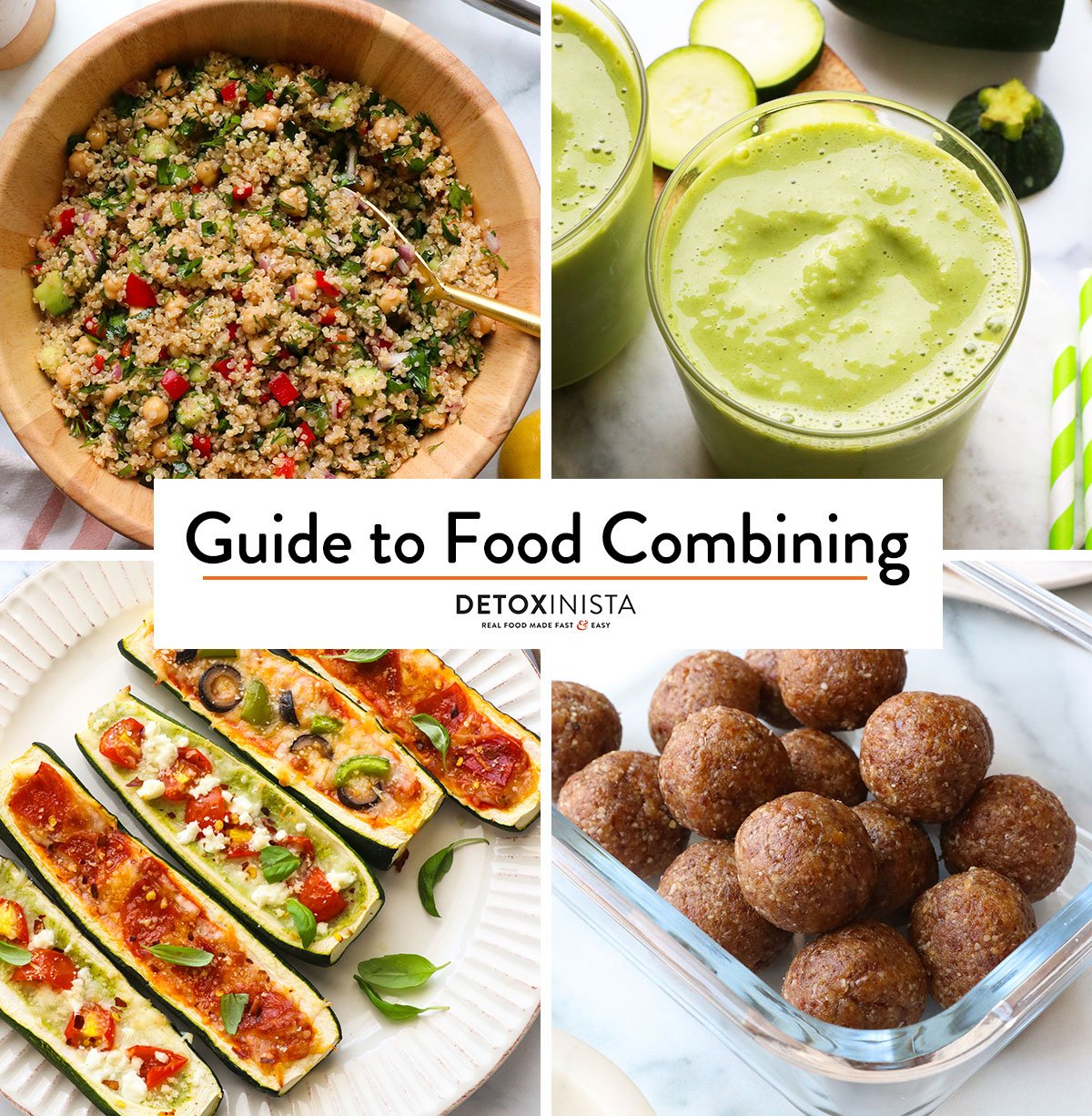
I was introduced to the concept of food combining while reading The Raw Food Detox Diet. The general idea is that you can ease digestion by not eating too many dense foods all at the same meal.
Instead, you’ll pick one category—such as animal protein, for example—then fill the rest of your plate with raw or cooked non-starchy vegetables, like a green salad and roasted cauliflower.
By simplifying your meals, your digestive system doesn’t have to tackle too much in one sitting, helping you avoid the bloated, sluggish feeling that can put a damper on the rest of your day.
The Science Behind Food Combining
There isn’t a lot of research behind food combining, so much of what you’ll read is anecdotal. (Read the comments below if you’re curious!)
Here’s some supporting research I’ve found:
- One study has shown that humans tend to overeat when offered a wide variety of foods during a meal. (source) By simplifying our meals, we will naturally eat less, without needing to count calories or worry about portion sizes. This might be why people see success in weight loss when following food combining principles.
- One study suggests that primarily eating protein at lunch and then mostly carbohydrates at dinner could have a positive impact on diet-induced thermogenesis (the number of calories burned from digestion) and glucose levels. (source) In this study, eating primarily carbs at lunch and then protein at dinner had a negative impact on glucose, so this may suggest that timing matters when you choose a food category.
- We know that the body releases different enzymes to digest carbohydrates vs proteins. (source) It stands to reason that if you eat primarily from one category, fewer enzymes will need to be released, thereby easing the digestive process.
If nothing else, food combining simplifies your meal choices and encourages you to fill your plate with vegetables. I think many people enjoy it because it makes you mindful of your meals, without cutting out entire food groups the way a low-carb diet or keto diet does.
Food Combining Categories
Food combining principles vary from expert to expert, so I’ll share a simplified version, as it’s a good starting point.
Here are the main categories to choose from:
- Fresh fruit. Most food combining plans recommend eating fresh fruit on an empty stomach, usually in the morning. This is because it digests quickly, so you don’t want it to be slowed down by other foods.
- Starches. This category includes winter squash, sweet potatoes, avocados, beans, lentils, and all grains, including oatmeal, rice, quinoa, and buckwheat.
- Protein. This category primarily includes animal protein, such as eggs, dairy, meat, and fish, as well as tofu, which is a rich source of protein.
- Nuts, Seeds + Dried Fruit. This category includes all nuts and seeds, as well as dried fruits like raisins and dates. Some suggest that bananas can be enjoyed with nuts, since they are slower to digest than other fresh fruit.
You can pair any of the above categories with non-starchy vegetables, like carrots, cauliflower, zucchini, or broccoli. A good way to determine if a vegetable is non-starchy is to see if it can be consumed raw. You can eat lettuce, beets, and green beans raw, so you know they are non-starchy, even if you do decide to cook them.
I’ve created a handy chart below to help you easily prepare a properly combined meal. Feel free to print it off and stick it on your fridge if you want to give this a try.
(click on chart below to enlarge or print)
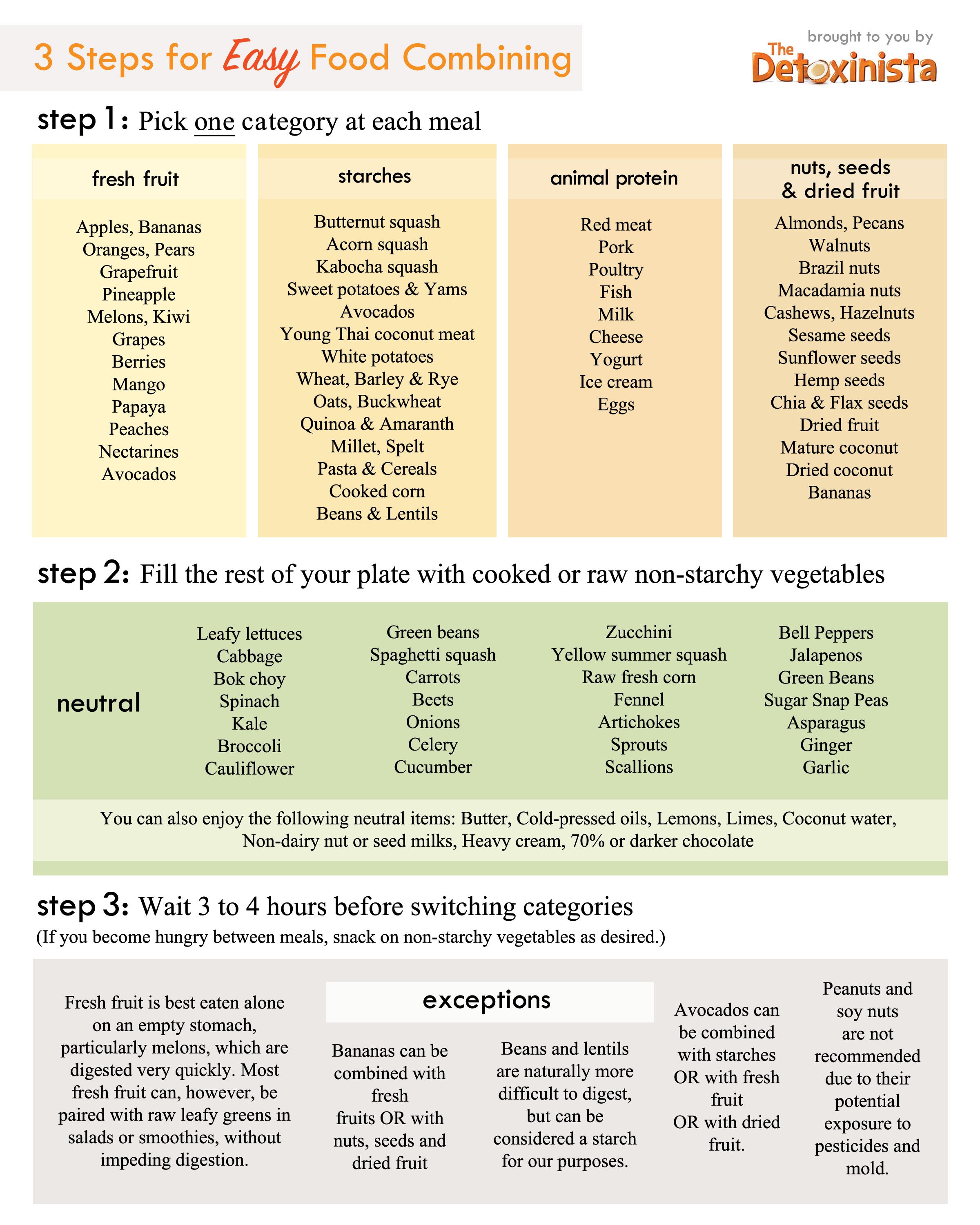
How to Create a Properly Combined Meal
For a properly combined meal, choose ONE category and only eat foods out of that category for that particular meal. The foods listed within the same category combine well with each other, and you may also include anything from the “Neutral” column to fill out your plate.
Wait 3-4 hours between each meal, before switching categories.
Starch Meal Examples
- Veggie Sandwich. Start with whole-grain bread filled with avocado, mustard, lettuce, tomato, and sprouts. Serve with a leafy side salad and a baked sweet potato topped with butter. You could follow this meal with some dark chocolate for dessert!
- Pasta with Vegetables. Use whole-grain pasta or gluten-free pasta, tossed with sautéed vegetables and olive oil.
- Quinoa Salad. Any grain-based salad topped with beans, veggies, and avocado will work. Try my Quinoa Black Bean Salad or Quinoa Chickpea Salad for properly combined recipes.
- Baked Potatoes. Sweet potatoes or white potatoes topped with veggie chili would be a hearty option.
- Soup. Hearty vegetarian soups, like Lentil Soup or Black Bean Soup, are easy options.
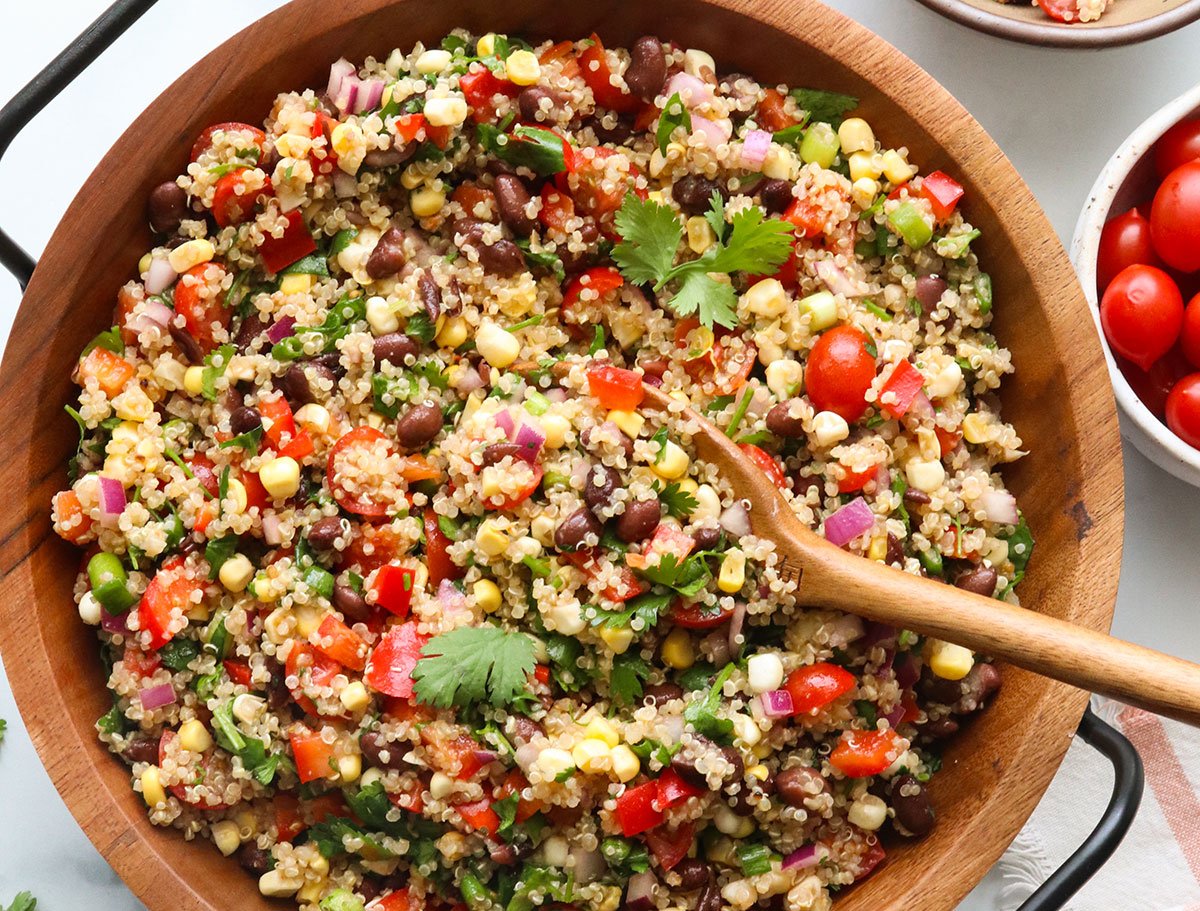
Animal Protein Meal Examples
- Meat and Fish Entrees. Serve baked chicken breasts or the best baked salmon over a large, leafy green salad, or with a side of roasted cauliflower or broccoli.
- Veggie Pizza Crusts. Try my cauliflower pizza crust or zucchini pizza boats topped with cheese and your favorite toppings.
- Spiralized or Shredded Pasta Alternatives. Instead of pasta, try sautéed cabbage, a bed of steamed cauliflower, or zucchini noodles with your favorite meatballs or meat-based spaghetti sauce on top. You can add Parmesan cheese on top to make it ultra-comforting.
- Lettuce Wrap “Tortillas.” Your favorite tacos and chicken fajitas can be served in a lettuce wrap or over a salad, allowing you to enjoy your favorite comfort food flavors without the sluggish digestion that often follows.
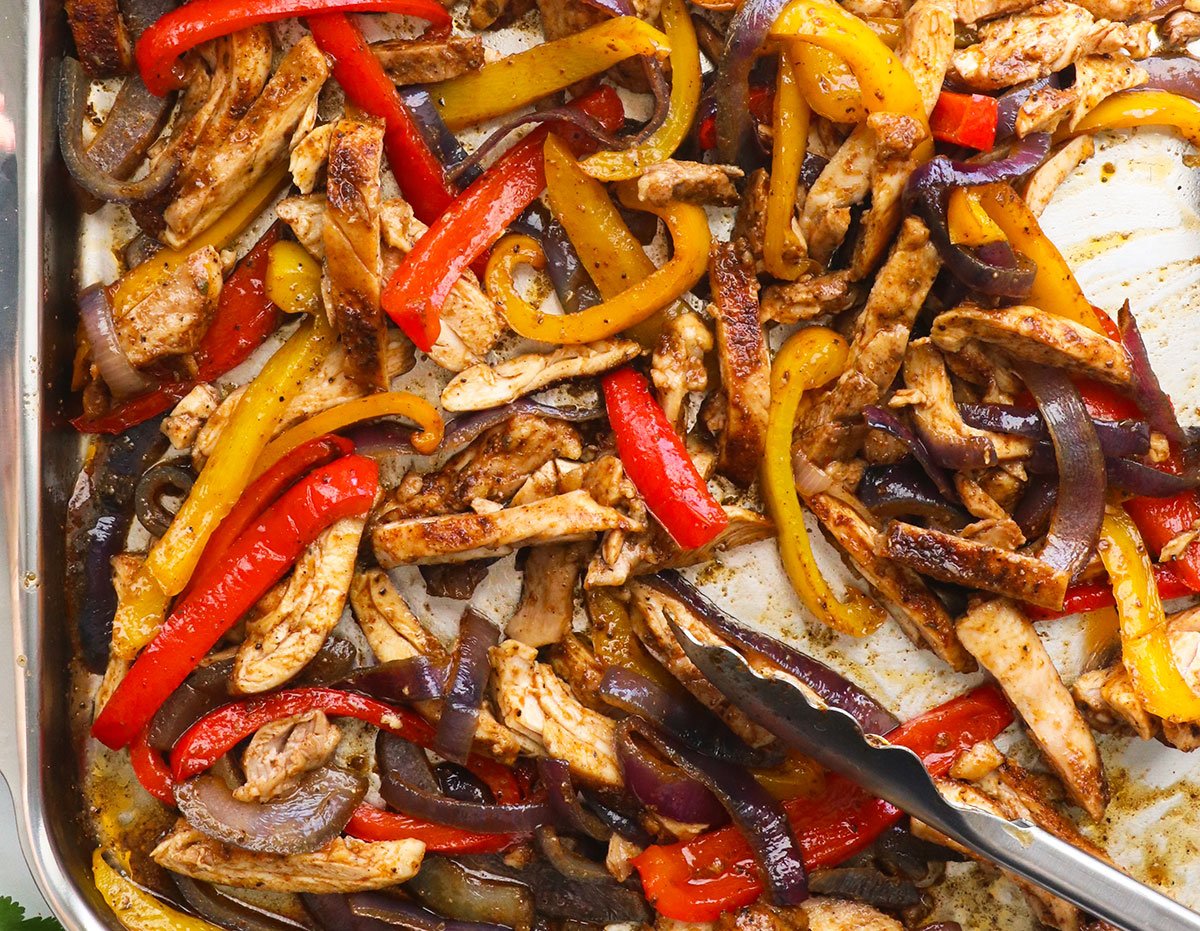
Nut, Seed + Dried Fruit Examples
- Salad with Nuts. For a main course, try a large leafy green salad topped with dried cranberries and raw walnuts, along with plenty of extra non-starchy vegetables for added texture. I also love a shredded carrot salad with raisins and nuts, or tahini dressing for a creamy salad.
- Bean-Free Hummus. Try my zucchini hummus served with sliced veggies as an appetizer for a nut-based meal.
- Grain-Free Breakfast Cereal. Start your morning with a bowl of Paleo Granola topped with almond milk. (Sliced banana could be added on top, too.)
- Nut-Based Desserts. Try a slice of raw cheesecake or a coconut macaroon after your nut-based meal.
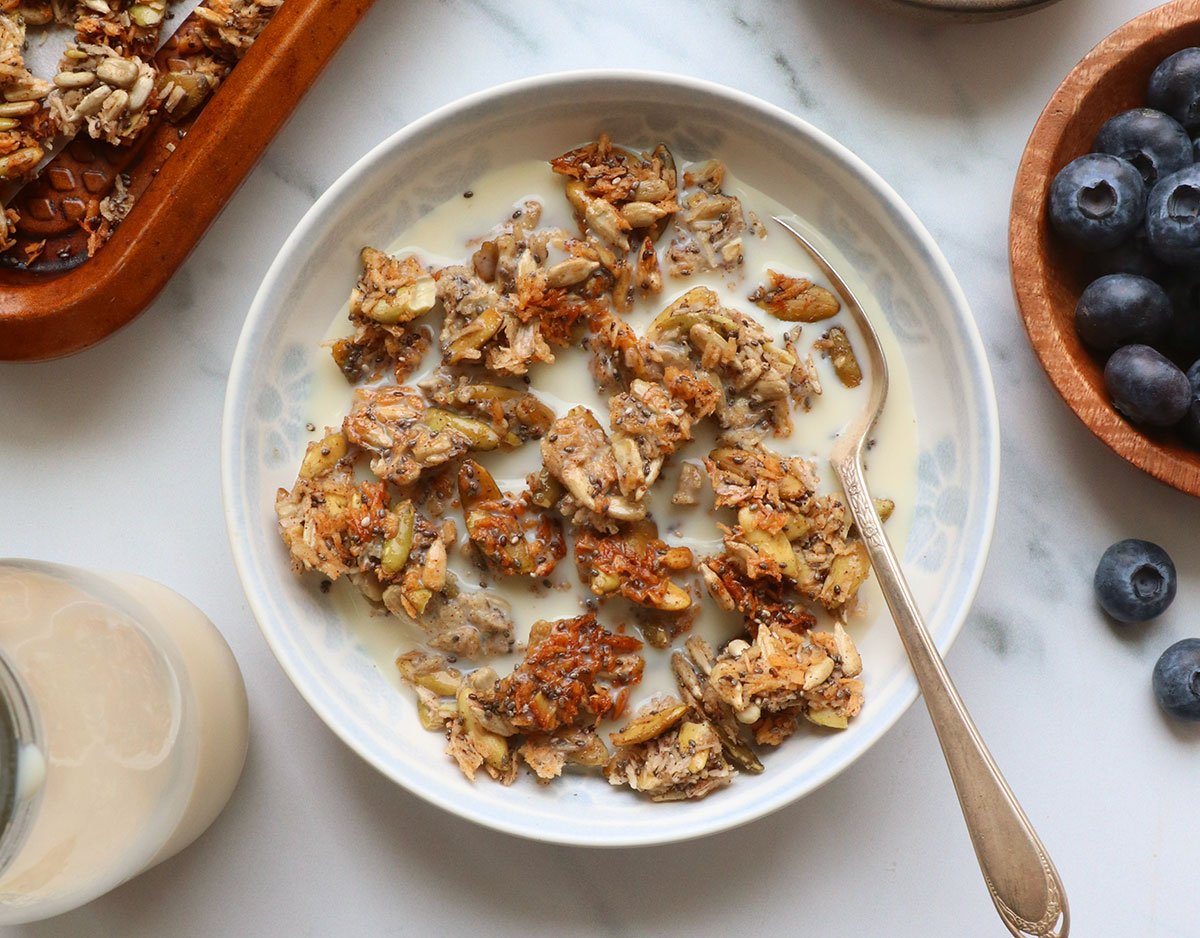
Fresh Fruit Examples
Fruit is often eaten alone because it digests so fast. However, it can be combined with other fruits and leafy greens in a smoothie made with your favorite non-dairy milk.
Fruit is generally not recommended as a dessert after a meal, as it may potentially cause fermentation and bloating. You can eat it as an afternoon snack or post-workout, provided it’s been at least 3-4 hours since your last properly combined meal.
Here are some sample smoothies that are properly combined:
- Dragon Fruit Smoothie
- Pineapple Banana Smoothie
- Spinach Smoothie (Bananas can be mixed with nuts)
- Zucchini Smoothie

Food Combining Cookbooks
Food combining helped me eat more real foods regularly, without restricting food groups. I could eat anything I wanted, just not necessarily all at once. It was such a game-changer for me that I went on to publish two cookbooks based on these principles.
- Everyday Detox. This is my first cookbook with 100 properly combined recipes. It includes properly combined sample meal ideas, as well as entertaining menus, in case you want to make a themed night out of your meal.
- No Excuses Detox. This book includes three additional sample meal plans, including a Budget-Friendly option and a Speedy Meal plan that has everything ready in 30 minutes or less. This book features 100 different recipes, ensuring you’ll never run out of food-combining options.
Once you’ve mastered the concept of food combining, you can use it as a tool anytime you feel the need to reduce bloating or want to feel more energized.
Shop my Cookbooks
Everyday Detox Cookbook
No Excuses Detox Cookbook
If you try food combining, I’d love to hear how it goes for you! Please leave a comment below to continue the discussion.

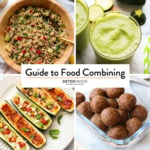
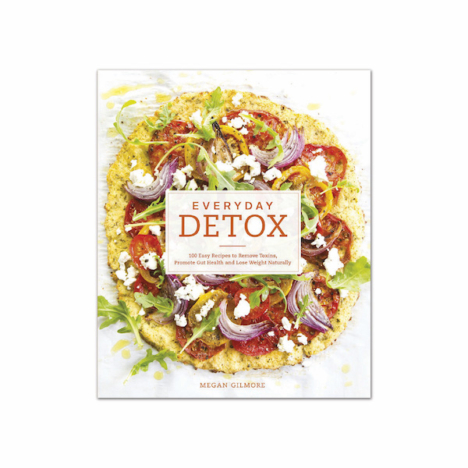
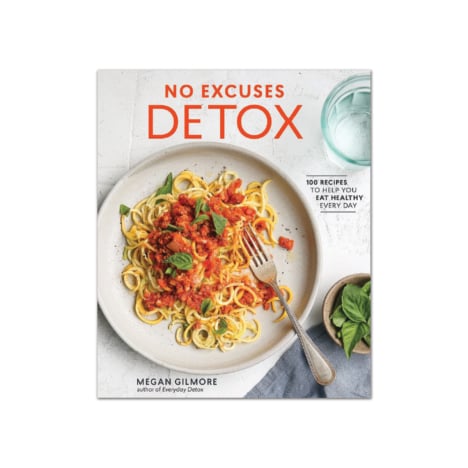

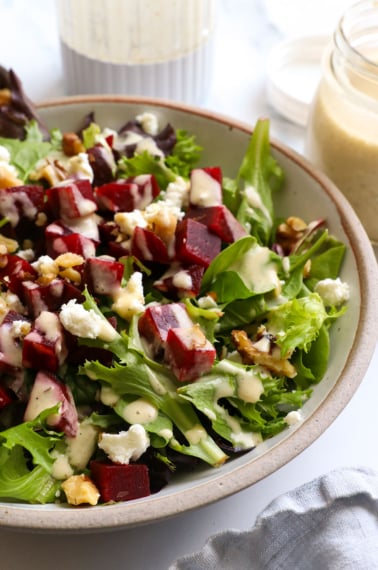
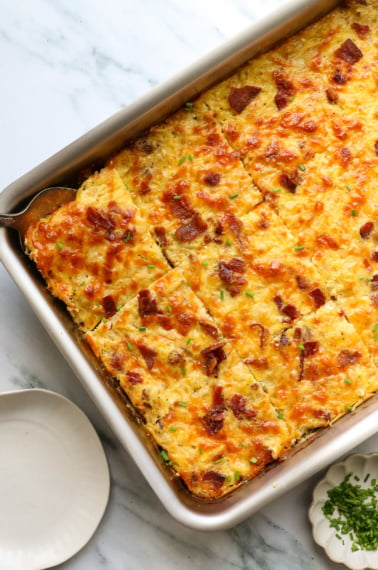
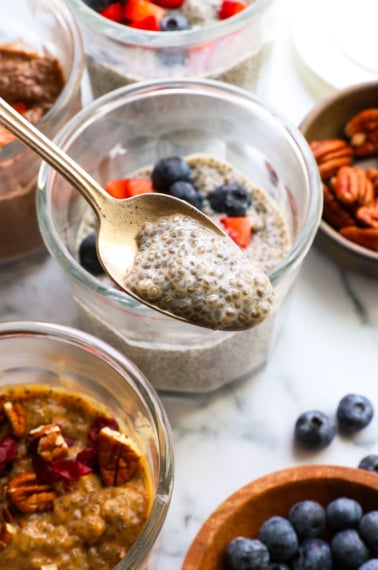







The examples made it more relatable. The way you explained the topic was very clear. I still have a question about one part.
July 22, 2025
Hi Megan,
Love your website!
Could you please tell me into which category the following foods fall as I eat them regularly:
carob, cinnamon, and Botanica’s Perfect Protein powder which includes brown rice, quinoa, and vanilla.
Should I ditch the protein powder because it may not be properly combined. Thanks so much!
Tirzah in Calgary, Canada
Hi! I’d consider spices like carob or cinnamon to be neutral. It sounds like your protein powder is starch-based, but feel free to experiment with it. Smoothies are “pre-digested” since they are pulverized in a blender first, so you might find that they still digest fine when adding protein powder to fruit. Food combining is designed to make you feel better and more energized, so you can adjust it as you see fit.
Hello,
I really like the food combining chart. I’m not able to print it given the instructions above. Is there any way you can provide me a PDF file of the chart?
Kind Regards
Mary
Hi Mary! I just updated this post to correct that. You can print the chart here: https://detoxinista.com/wp-content/uploads/2010/11/food-combining-chart.jpg
Hi Megan, I am trying food combining again, I tried it years ago, and it works great!! I do have a question for you, If I have a chicken salad, with lots of non-starchy vegetables and chicken, can I use Olive oil as my dressing? what are the rules for olive oil and food combining? thank you!! Lori
I was taught that olive oil can be considered neutral since it’s used in relatively small amounts, especially on something like a salad with lots of high-fiber, watery veggies.
Thank you for this simplified chart! What’s your opinion on combining honey with other foods?
Good morning,
Where would coconut milk fall?
Thank you!
I think it depends on the type and amount. I’ve always considered nut milks in the “neutral” category, since they’re so diluted. Canned coconut milk is more dense, but often we don’t consume that much in a sitting… so I’d still consider it neutral in most cases.
Nice article. Why is butter and cream neutral? I have read other explanations of this diet that group fats with the proteins. A bit confusing for me.
As I understand it, it’s because they are used in such small quantities. (Usually not more than a tablespoon in a meal.) But, I learned a simplified method which made it easier for me to follow; I know there are much more strict guidelines out there!